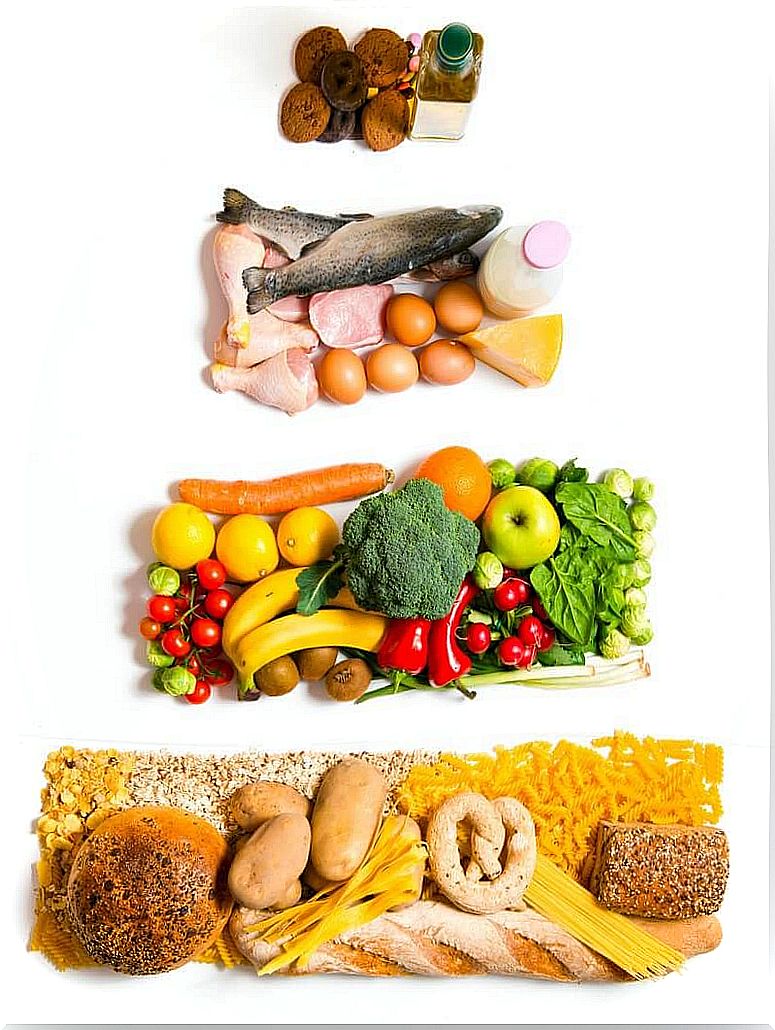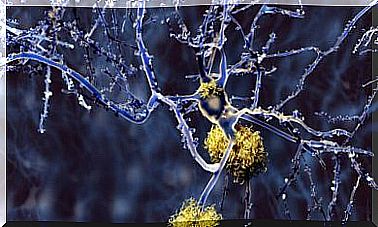What Is The Current Food Pyramid?
The requirements of the nutritional pyramid evolve or change according to human needs. As the species progresses, there are varying levels of the nutritional pyramid to help us maintain an ever so healthy lifestyle.

To be more aware of what types of foods we should include in our daily diet and how much, it is important to know the Food Pyramid or Nutrition Pyramid.
This diagram will allow us to know the most recommended foods to lead a healthy diet. This way, we can consume them on a regular basis to improve our diet.
In addition, it is also fundamental to know the foods that are the least healthy for our health. On the other hand, we also need to recognize those that we should absolutely limit or eliminate from our diet.
In summary, the Nutrition Pyramid or Food Pyramid is a graphical diagram designed to indicate which foods are most needed in our diet, and what is the recommended amount. On this pyramid, there are different models which take into account several countries and which have evolved over the past decades.
To interpret this schematization of the daily food ration, the foods placed at the top or at the top are those that we should consume in smaller quantities. On the other hand, the foods placed towards the base are those that we should consume more frequently and in greater quantity.

The beginnings of the food pyramid
The first conceptions of the food pyramid date from the 1970s. The most famous nutritional pyramid is that of the United States Department of Agriculture. It was designed in 1992 and revised a few years later in 2005.
So in its early days, the Nutrition Pyramid started grouping foods together starting with the most craving at the bottom and ending with the least recommended at the top.
Gradually, staple foods like bread, cereals, rice and pasta come together at the base of the pyramid. These foods, rich in carbohydrates, will be the ones that we should consume the most frequently. This is why these foods represent the most important quantity on the nutritional pyramid.
Immediately afterwards, above these first foods, fruits and vegetables are positioned , with their intake of fibers, vitamins, salts, proteins and other nutrients. This category also represents a significant proportion of the foods that we should consider in our daily diet.
A rung higher we find meats and fish, dairy products and eggs. These foods provide high amounts of protein, but should be eaten in smaller amounts.
Finally, at the top of the nutritional pyramid, we find all the oils, saturated fats and sweets. Therefore, we must limit these foods, due to their high calorie content. To maintain a good diet, therefore, we need to consume these foods much more in moderation.
Objectives of the food pyramid
The objectives of this nutritional pyramid are to indicate in general the recommended amounts of carbohydrates, energy as well as vitamins and minerals. These foods and their quantity will help to maintain the chemical processes of our body in an optimal way.
On the other hand, this pyramid indicates to us what is the necessary quantity of proteins for the development and the good health of the tissues of the organism.
In addition, our diet should be accompanied by a daily consumption of between 1.5 and 2 liters of water, to maintain good hydration.
The current food pyramid
As we explained at the beginning, the nutritional pyramid scheme has evolved over the years, in line with new research and findings related to nutrition.
The most current conception of the nutrition pyramid is based on frequent physical exercise, maintaining good hydration and, ultimately, a healthy lifestyle.
However, compared to the more traditional food pyramid designs, the new system incorporates two types of products. On the other hand, fermented drinks such as beer, wine or spirits are taken into account.
The diet clearly indicates that this type of food should be consumed in an optional, moderate and, above all, responsible way.
Foods that make up the nutritional pyramid

On the basis of the pyramid, as was the case before, we find foods rich in carbohydrates. These are the ones we should be consuming the most. But depending on the physical activity of each person.
Then we find the fruits, vegetables and olive oil, which we should try to consume several times a day. Specifically, we should be consuming two to three servings of vegetables per day, and three or four fruits per day.
A little higher, we will find all dairy products, as well as fish, eggs and lean meats, such as chicken or turkey. These foods are a good source of protein. However, we need to limit their consumption to a maximum of once a day, or about five times a week.
Above these, we finally find all the products that we should limit in our diet. It is about consuming these foods on an optional, occasional and moderate basis. Among these foods, we find red meats, but also pork and veal as well as any class of cold cuts.
In the last level of the nutritional pyramid, saturated fats, sweets and pastries are grouped together .
The new top of the pyramid
The top of the new nutritional pyramid includes, among other things, nutritional supplements. We will therefore find types of products, such as vitamin supplements or mineral salts.
These foods should be consumed only as an individualized option. They will mainly depend on the needs and medical recommendations for each person.
This can affect some people with a disease. This is the case for people who suffer, for example, from an allergy or intolerance. In addition, people who cannot eat certain types of food will have to replace them with others.
It can also be people who follow a vegetarian or vegan diet. In these cases, they will have to resort to supplements according to their specific needs. They can, for example, supplement with a supply of vitamin B12 in order to obtain all the necessary nutrients.
It is not recommended to consume these supplements without medical supervision. Only the doctor should prescribe them according to each particular case. Besides the food pyramid, there are also other forms of graphic aids which contribute to nutritional training of the general public.
Conclusions
The food pyramid expresses the nutritional recommendations for a balanced diet. In any case, the pyramid does not group together the foods recommended as part of a particular diet.
However, physical activity is not integrated into the pyramid. This remains a diagram whose structure concerns above all what is put on the plate. The primary objective is to increase the level of daily physical activity.
Nutritional recommendations have not been the subject of major upheavals in recent years. Therefore, the structure of the pyramid has not changed much. The principle remains very simple. The more the family occupies an important place in the graphics, the more the quantity is important on the plate.
Finally, the food pyramid was adapted to various types of diets. We can find the pyramid of the Mediterranean diet, which favors the consumption of fat in the form of olive oil. In addition, there is also a specific food pyramid for people who follow a vegetarian diet.









